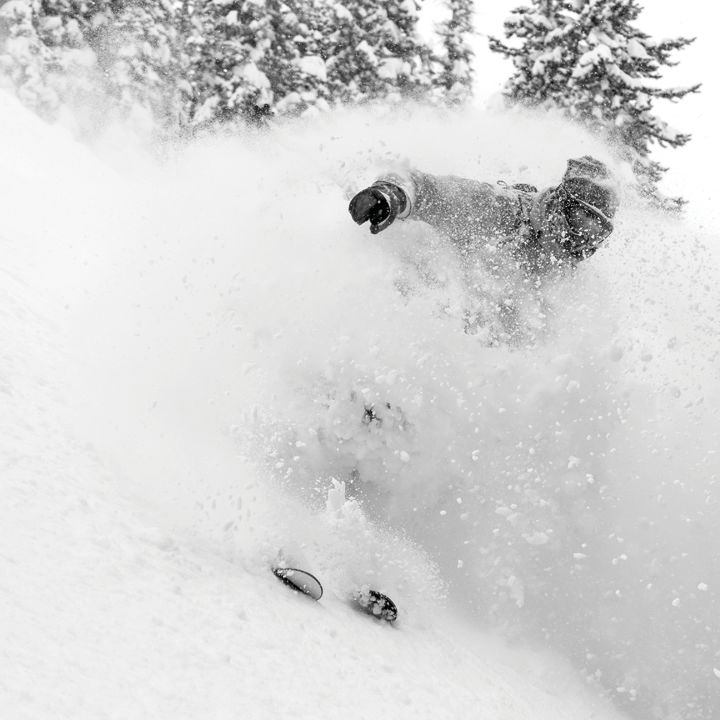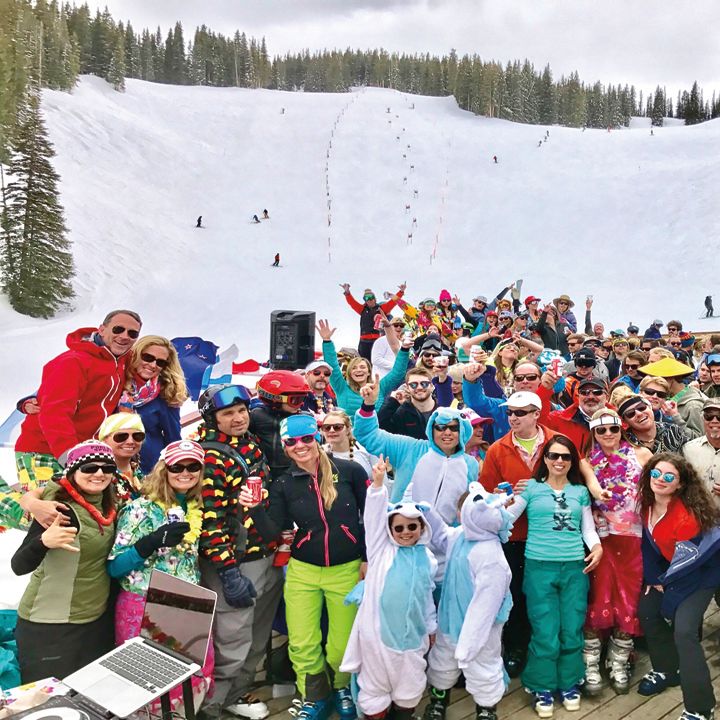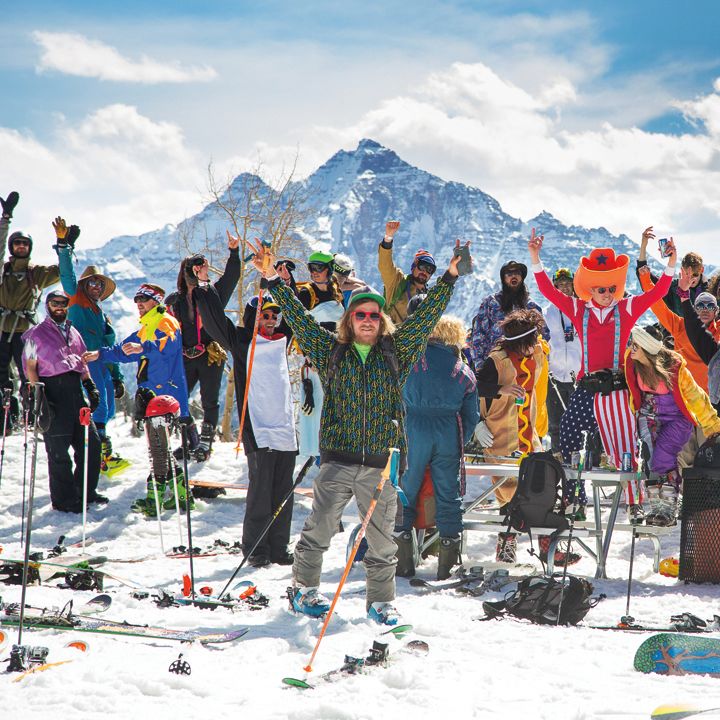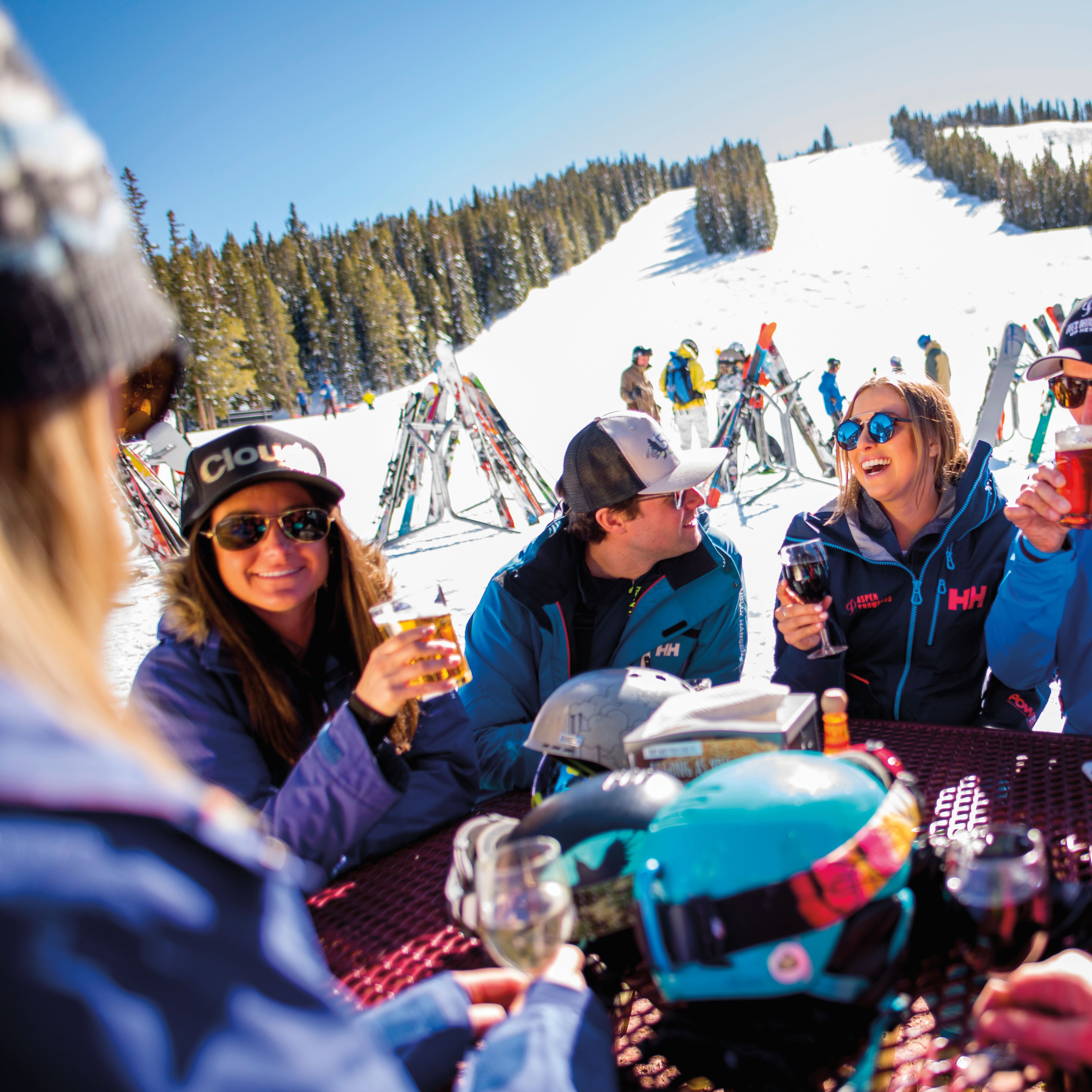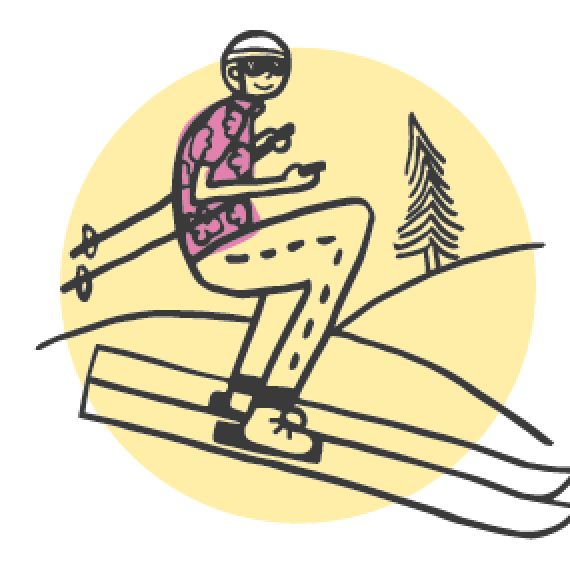How to Keep Your Ski Season Going After the Lifts Close
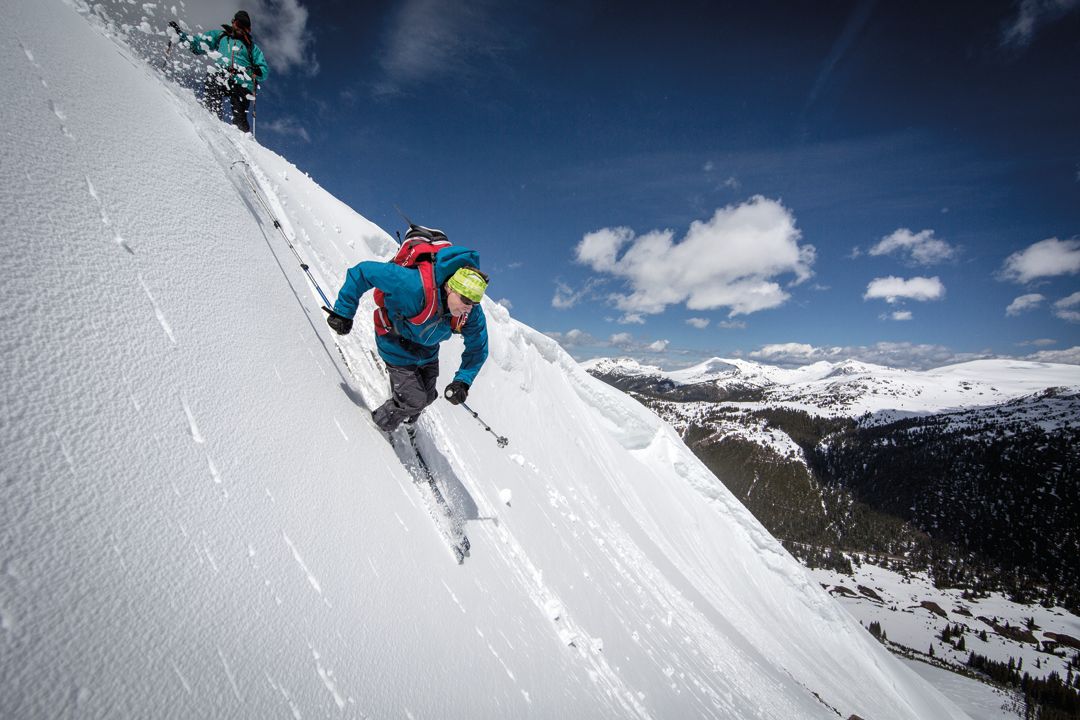
Anders Gustafson launches into Fourth of July Bowl off Independnece Pass.
Image: Matt Power
In the winter in Aspen, to most people, Independence Pass connotes the view looking southeast toward Mount Shimer and New York Peak. Meanwhile, the pass itself is hidden from sight, situated deeper in the Sawatch Mountains and, accordingly, in Aspen’s collective consciousness.
But starting the Thursday before Memorial Day, provided plows have been able to clear the upper stretches of Highway 82, Independence Pass turns into backcountry skiing nirvana, with thousands of acres of bowls, chutes, and powder fields a relatively short skin or boot-pack from your car. You can bet the pass will be on our minds then—first thing in the morning.
Yes, seriously. If you’re going to ski the pass, gather up your gear—skis or splitboard, poles, skins, pack, shovel, probe, beacon, map, extra layers, snacks, and water—the night before. Know how to use all of it correctly. Then round up a friend or three, get up early, and aim to be skinning while the snow is firm.
When that late-spring sun rises, the snowpack warms up quickly, and the danger of a wet-slab avalanche goes up with every temperature degree. The farther you plan to go, the earlier you’ll need to get started. For a longer tour—to the Geisslers, for example—that could be 6 or 7 a.m. As spring progresses, desired start times get even earlier.
“It’s leisurely having a cup of coffee in Aspen and heading up there at 10 in the morning, but that’s not really the right approach,” says Lou Dawson, who publishes the backcountry skiing blog wildsnow.com and has written more than a half dozen guidebooks. “To do the bigger tours, we do Alpine starts, where we get there before sunrise. For really big tours, we head out in the dark.”
Your reward? Sublime corn snow. “There’s a sweet spot in the morning on any slope where, if the snow has frozen the night before, it’s now softening,” says Dawson. “When it’s ‘ripe’ corn, it’s perfect to ski.”
Keep in mind: as temps continue to rise and the snowpack softens, each turn you make will displace more snow, creating trenches and moguls that mar the slope for the next skier. So if avalanche avoidance and perfect snow aren’t reason enough to get you started early, maybe skier etiquette would be.
We asked Dawson to recommend three tours of varying lengths for experienced backcountry skiers and riders. (For more options, see his new guidebook, reviewed on page 32.) They can sometimes be skied into July, but conditions typically excel in late May and early June.
Short and Straightforward:
Mountain Boy
From the 12,095-foot-high summit of Independence Pass, skin southwest from the parking lot across the snowfield, then stay left and follow the ridge as it contours around the head of Mountain Boy Basin. Carefully pick your spot to drop in off the often-large cornice. A pair of long, sweet pitches, followed by a section of flats, leads down to a switchback in the road on the pass’s eastern side. You’ve either dropped another car here as a shuttle or feel comfortable thumbing a ride back up. Another option if the day’s still early: “Put your skins back on, tour back up the gulch, and climb another pitch,” says Dawson, who’s probably in better shape than most. “You can get in two or three laps that are reasonable and fun.”
Longer and More Difficult:
The Geisslers
This tour not only offers countless lines to choose from but also allows you to ski right back to your car. But be prepared to boot-pack to reach the summit of each peak, which involves some exposure and potentially tricky footing on rock. Park at the last big hairpin turn on the west side of the pass. (The small parking area often fills up—yet another reason to get there early.) As you skin up the gently sloping valley to the north, the Geisslers, a series of three modest but scenic peaks that all serve up exceptional skiing, rise up ahead.
The wide slopes of Geissler 1, near the head of the valley, offer plenty of room for skiers to spread out. Geissler 2’s broad flank includes a handful of steeper chutes through some rock bands. Less frequently climbed than its sisters, Geissler 3 is closest to the parking area and can be accessed from the adjoining saddle with Geissler 2 or from Linkins Lake, a shorter but steeper climb from the parking area. Skiing just one of these peaks makes for a great tour, but if you’re super motivated, and conditions hold steady, hit up two or all three in a morning.
Longest and Most Difficult: Ski the Continental Divide
Tackling the Divide brings you deep into the wilderness. Park as for the Geisslers tour, then skin up the valley to the north past Geisslers 3, 2, and 1. At the head of the valley lies Independence Lake, with Geissler 0 to the northeast. Make your way to the Continental Divide on the ridge south of Geissler 0’s summit. From here, drop down the Divide’s eastern side for 800 to 1,500 vertical feet of skiing into an upper basin of the North Fork of Lake Creek. Climb back up to the ridge between Geissler 0 and Twining Peak to the south, then drop down the Divide’s western side before skiing back to your car.
Timing is everything for this tour. “People who are experienced with the pass time their day by the east or west exposures, according to how the sun is softening the snow,” says Dawson. In this case, the east-facing slopes toward Lake Creek get the sun first; the west-facing slopes off the Divide don’t soften up until later. Hit it right, and you’ll ski ripe corn on both descents.
